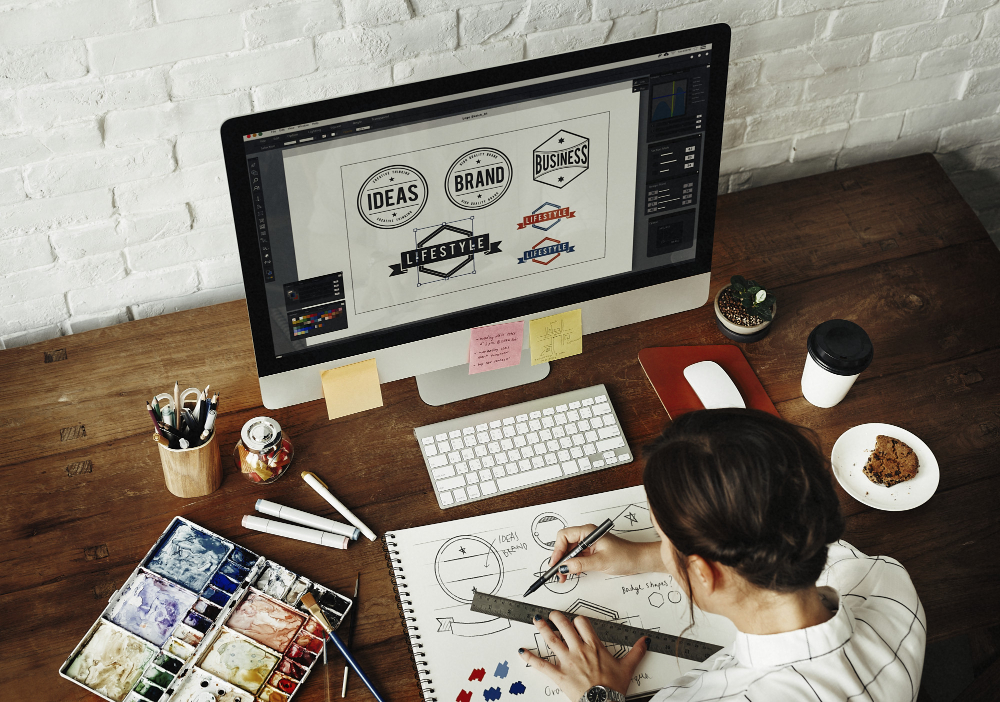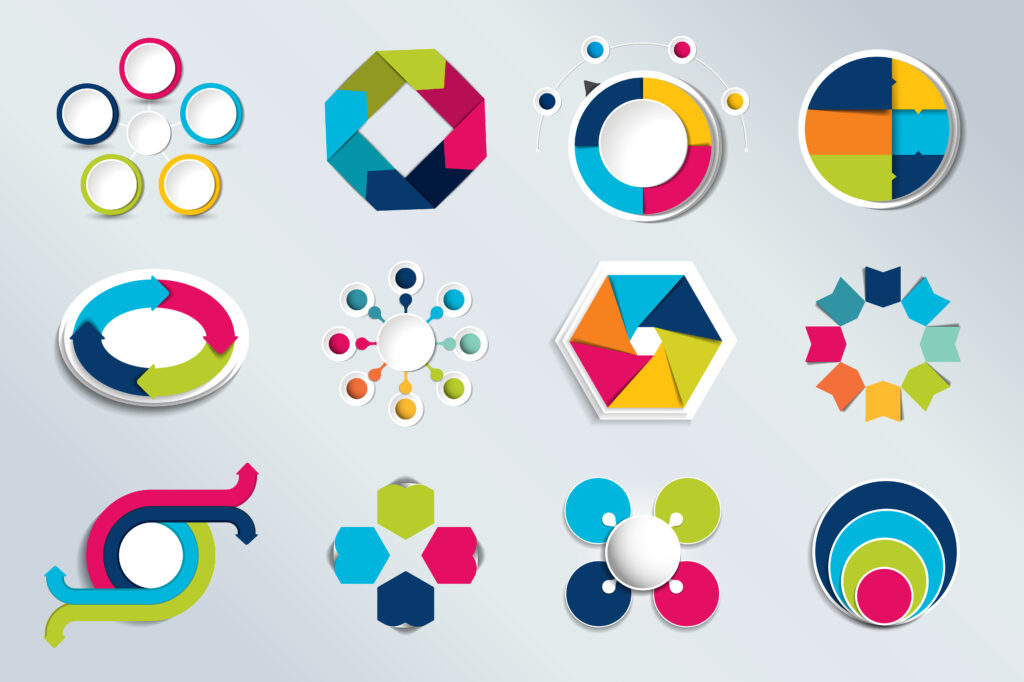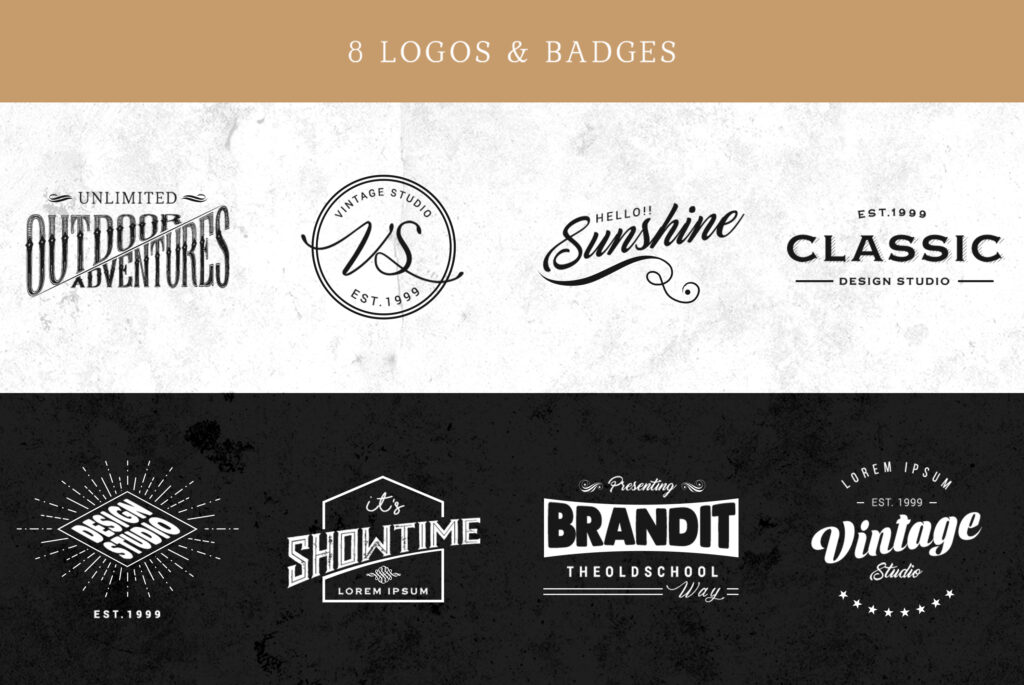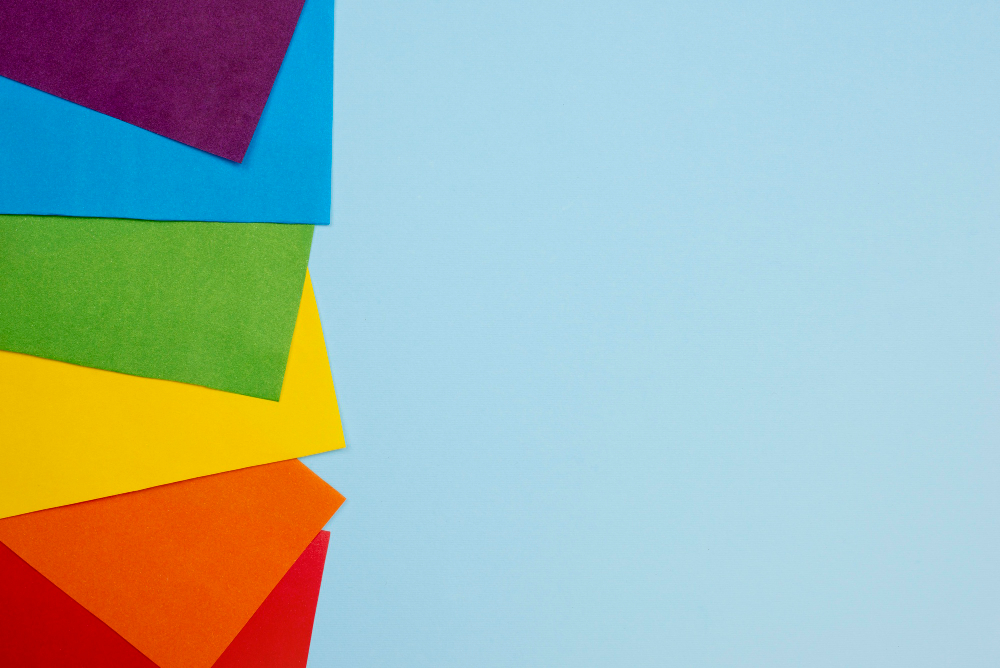
Have you come across a big brand with no logo? Not at all! Every brand has a logo because it influences your customers and recognizes what they perceive about your brand. Therefore, you want to create a logo that stands out in the market and speaks louder about your business. But how do you get the best logo?
Don’t be upset at all! We’re here to guide you how to make a good logo design for your business in no time. From seeking inspiration to picking the right colors and font, this blog post will guide you on what makes a great logo design from start to finish, so you can design your own logo by yourself.
Let’s get started!
How to Design a Logo for Beginners: 9 Easy Steps

Let’s dive into the world of logo designs and get the best one for your business. Here’s the step-by-step guide:
- Research and explain your brand identity
- Seeking inspiration for your brand.
- Determine logo style
- Find logotype
- Choose a versatile color theme for your logo
- Select the right font or typography
- Communicate with your logo designer
- Ensure the scalability of your logo
- Evaluate the options
1. Research and Explain Your Brand Identity
Your logo is the face and personality of your brand. Therefore, you want a logo that speaks louder and communicates your brand’s personality. To do it, you need to understand your brand’s core values and personality.
Once you get a clear concept of what makes you different from others and what your business or brand is all about, it will be easier to make a unique and attractive logo for your brand.
But, you need to consider some questions that clarify your brand’s personality. Ask these questions yourself:
- Why did we start this business?
- What beliefs and core values are to be considered as a company?
- Which thing makes us unique, even better than others?
- What is so special about our brand?
- How can I describe our brand in three words? What would it be?
- How do customers describe our brand?
2. Seeking Inspiration for Your Design
The longest part of the design process is to determine the logo inspiration. First, analyze all the best logos around you daily and conduct proactive research online. Discover logo trends and navigate different design blogs to learn interesting logo ideas.
Get inspired by other brands’ logos and create a mind map for your logo design project. This way, you know how different elements work together and how different designs can be used in multiple contexts or situations.
Moreover, look at the competitors and what they are doing in the industry, and note down the key points you should consider or shouldn’t. Make sure that your logo cannot be similar to someone else’s.
Now, after researching outward, it’s time to create your own. Start brainstorming your vision and use Thesaurus or other tools to describe your brand’s theme. It will help you list adjectives and describe your business.
3. Determine Logo Style

When you combine all seven main elements into one logo, it forms a cohesive style. You can also notice that various aesthetic styles make up a brand logo.
Determining the stylistic direction for your logo as well as contemplating the inspiration you’ve collected so far. Ask yourself:
- Is your brand classic or minimalist?
- Does it belong to modern design?
- Does your brand possess a unique quality?
Consider all your business themes and narrow down the shapes and fonts you want to include. Whatever style you have decided on, explore more before starting the actual theme-creation process. This method helps you complete and look over all elements that bring your logo to fruition.
4. Find Logo Type
Designing a logo isn’t a challenging task. Multiple types of logos make you perplexed. But don’t worry, we’re here to tell you all types of logos. Have a glance at all logotypes:
- Wordmark Logo – text-based logos consist of fonts, style, and typography.
- Monogram Logo – another typography-based logo.
- Pictorial Logo – graphic-based logos.
- Abstract Logo
- Mascot Logo – create illustrated characters to make fun, cartoonish, and friendly personification logos.
- Emblems Logo – a traditional logo comprises text within an image or icon.
- Illustrative Logo – complex-design-based logos.
- 3D Logo – three-dimensional logos that create a real-life object.
- Corporate Logo – convey a message to your target audience.
- Calligraphy Logo – artistic lettering style logos.
- Combination Logo – combine text and an icon and become versatile logos.
- Letterforms Logo – similar to wordmark logos.
- Dynamic marks – an adaptable and flexible logo that can change color, shape, and text.
If you want to gain detailed insight into each type, you can read about 13 different types of logos, ranging from plain text to symbols or images. You need to consider all logo styles before creating your masterpiece.
Each design has unique features, so think before choosing anyone. Choose the type that suits your brand and makes a connection with your target audience.
5. Choose a Versatile Color Theme for your Logo

Your logo color will enhance your brand’s identification, and your customers will react in return. Web colors are digital representations that convey various messages, from enthusiasm to trustworthiness, using different colors, such as red, orange, yellow, green, blue, purple, and pink.
When we talk about logo color options, three categories will be considered:
- Black and white logos
- Monochrome logos
- Color combination logos
Let’s dive into the details.
- Black and White Logos: It provokes a sense of simplicity and minimalism, which you can see as modern and chic nowadays. These logos promote a feeling of luxury, sophistication, and quality with their color scheme.
Therefore, black-and-white logos represent a sense of security that is classic and timeless. The best example of a black-and-white logo is the Apple logo. In short, it is the best fit for a simple, sleek, yet classic design.
- Monochrome Logos: These are single-color logos that work well with wordmarks and lettermark logotypes and strongly influence the individual color of your brand. One of the best examples is Coca-Cola, which has a red logo, and McDonald’s, which has a yellow logo.
- Color Combination Logos: These have a strong impact and enhance your logo. The right choice of color combination creates variations and depth in logo design. However, sticking with just 2 to 3 hues or shades is advised.
Furthermore, there is psychology behind different colors. Each color represents certain emotions and ideas. Therefore, it is important to know the meaning behind each color and choose the color that fits your brand. Have a glance below:
- Red color indicates excitement and passion as well as a symbol of anger.
- Orange is a vibrant, invigorating, and playful color.
- Yellow highlights the cheerfulness of your brand and has a youthful energy. It looks friendly and accessible.
- Green is a versatile color that any brand can use. It develops a connection to nature.
- Blue is the symbol of trustworthiness and maturity. It is a common yet cool choice.
- Purple is an eclectic, mysterious, and feminine used by luxurious brands.
- Pink represents a youthful and feminine look.
- Brown is best suited for rugged and masculine vintage logos.
6. Select the Right Font or Typography
Choosing the right font among thousands of logo designs can be tricky because each font indicates something different and must be applied according to your brand attributes and identity.
Let’s examine different types of fonts and consider their visual representation as a source of branding and communication.
- Serif fonts have little feet at the end of the letter, making them classic, high-end, and old-fashioned. For example, Times New Roman. Serif font is the best fit for classic or vintage logos.
- Unlike serif fonts, Sans Serif is for a modern and clean look that doesn’t have feet. This sleek and simple style font is a go-to choice for modern logos.
- Script Fonts are similar to handwriting and come in a huge variety, ranging from elegant calligraphy fonts to relaxed and down-to-earth scripts. They give an individualistic appearance and have an extremely unique look.
- Display fonts are highly stylized, catchy, and designed for the business.
7. Communicate with your Logo Designer
Now, it’s time to gather all the information mentioned and tell your preferences to your professional designer. Remember that the more detail you give your designer, the better they can generate a good logo.
We are satisfied with Vince’s Logo Design, which will give your logo a unique yet elegant look.
For a desired logo, you need to communicate clearly with your designer and tell them everything in detail, including your chosen color, logotype, style, typography, and your brand’s core values. An expert designer has lots of suggestions that will be easy to understand and readable to your target audience.
8. Ensure the Scalability of Your Logo
Logos represent your brand or business on multiple platforms, whether in print form, on your website, on your social media business page, or across the internet, to grow your business globally.
Create a logo design that can be adapted to any size, whether it’s increased to the size of a billboard or scaled down to the side of the pen for screening. Every part of your logo must be legible, except for its size.
9. Evaluate the Options
Voila! You’ve got many logo design options. Now, it’s time to make the final decision. Consider the logo options that represent your brand’s visual identity. Think about how your logo could incorporate the different elements elsewhere. Remember to check the scalability of your logo because it represents multiple platforms, including social media, print, and the company website.
When you decide on the final project for your logo design, creating multiple variations, including black and white variations that look good while placed on light or dark backgrounds, is important.
FAQs
Q1: How can I design a logo on my own?
Ans: You can access free logo maker tools such as Canva and Adobe.
Q2: What makes a good logo design?
Ans: You need to follow all the main 7 elements of logo design to get a perfect logo that is simple, memorable, timeless, versatile, and relevant to your brand.
Conclusion
Your logo is one of your brand’s most recognizable and identifiable components, so it’s important to do it correctly and perfectly. The logo mentioned above design procedure will help you create a good logo and generate many ideas to follow.
At the end of the day, great logos are the result of little things to be considered and perfectly done.

Vince Logo Design is a distinguished digital marketing agency, specializing in crafting compelling brand identities and optimizing online presence. We are your partners in creating impactful digital strategies that drive results.
Get in touch.Get Free Consultancy
Fill the following form and receive a guaranteed response within 48 hours.
We have worked with world's leading brands











